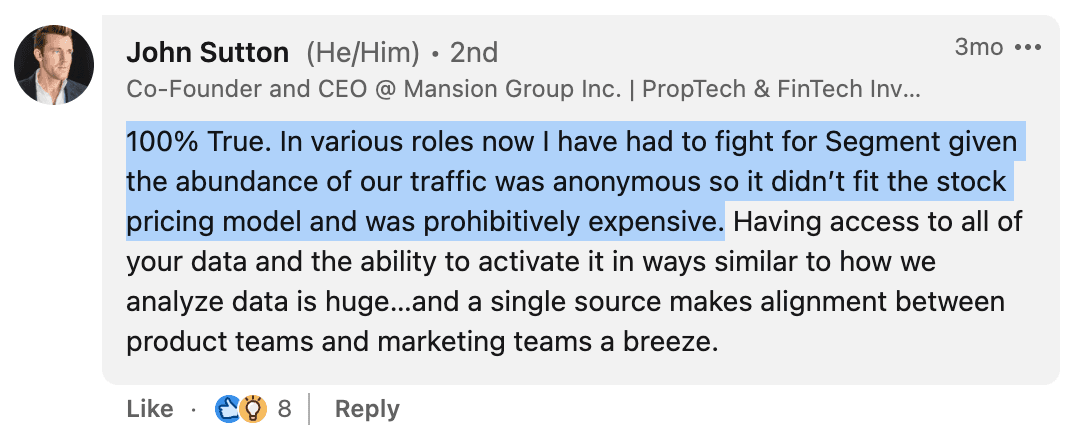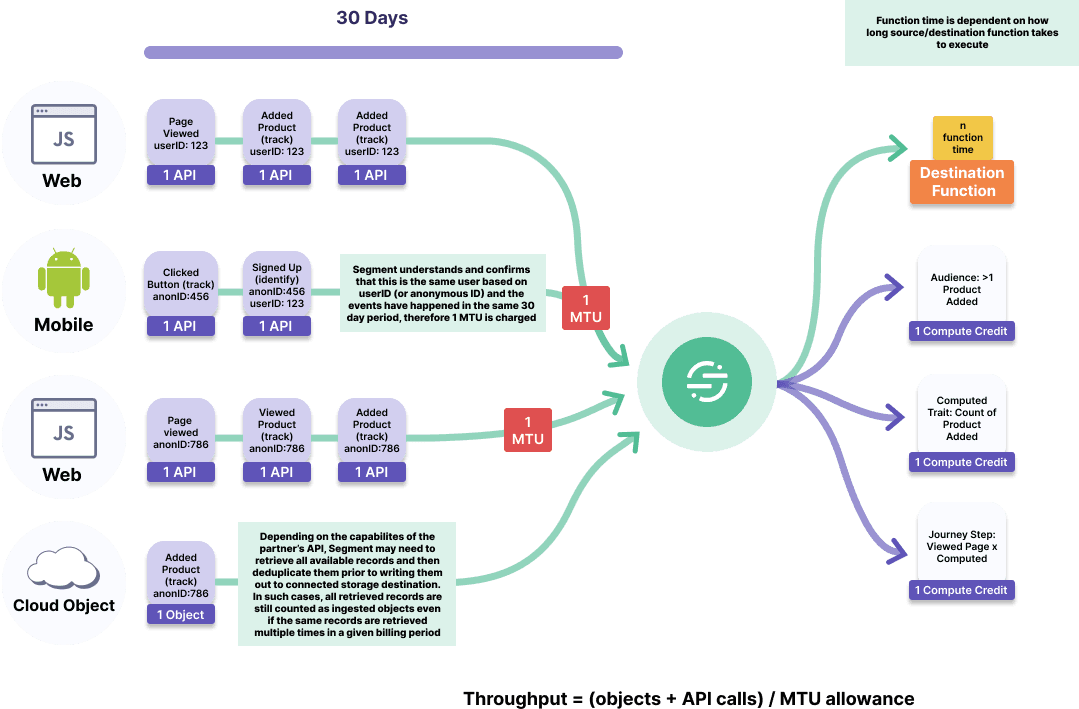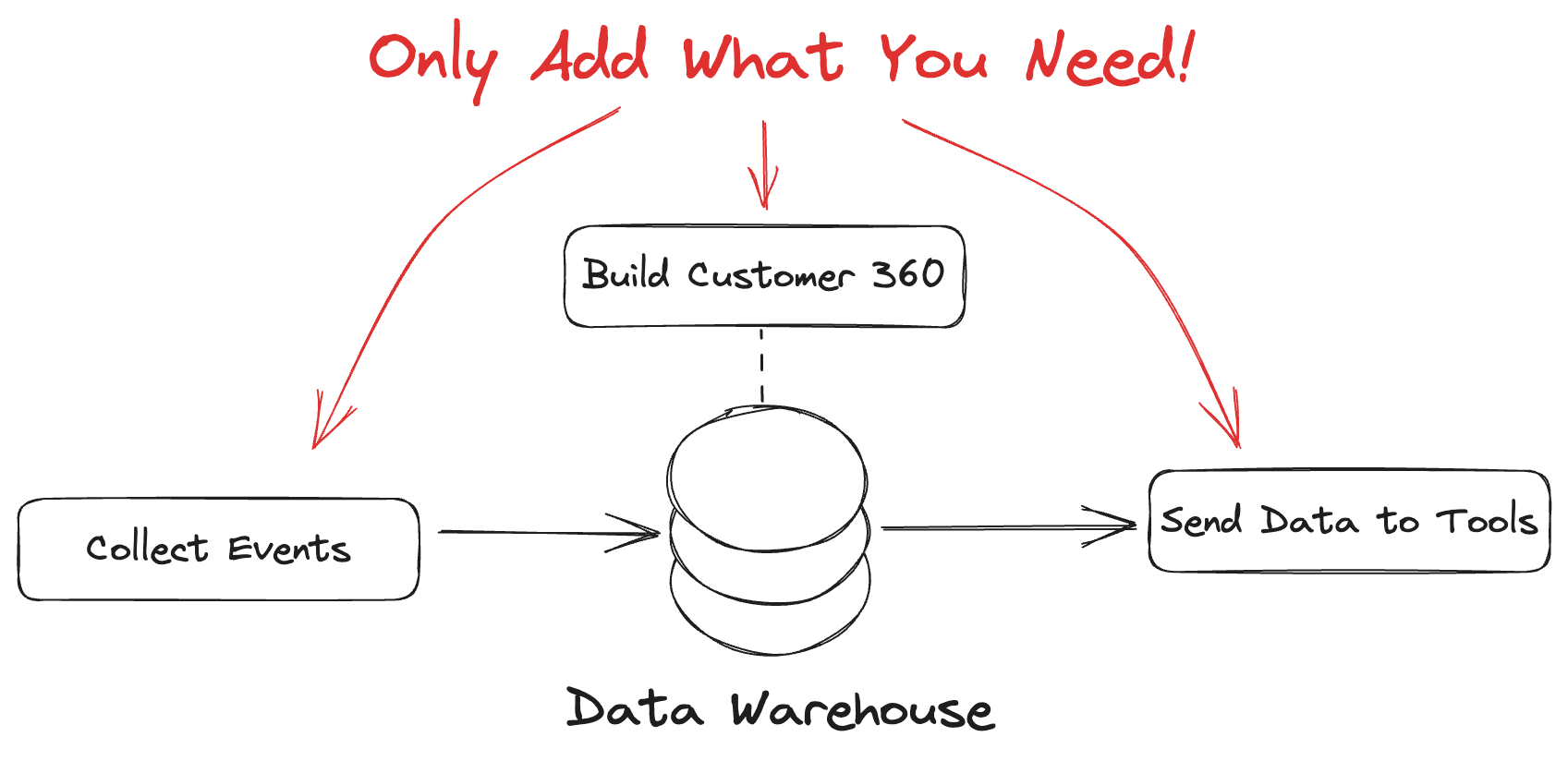5 insider tricks to hack your CDP bill & save a small fortune
With Q4 around the corner, we’re sharing some secrets to help slash your Customer Data Platform costs.
Ju Lee,
Brian Kotlyar
October 4, 2023
|6 minutes

The leaves are turning, the holidays are looming, and 2024 fiscal planning is underway. For many of us that can only mean one thing–it’s budgeting season! Among all the expenses in a marketing technology budget, traditional Customer Data Platforms (CDPs) tend to be some of the most expensive, but we’re here to tell you that they don’t have to be. We’ve seen hundreds of enterprise CDP negotiations over the years, so we figured we’d share how to avoid getting screwed in your upcoming contract renewal or usage negotiation. Here are the best behind-the-scenes tips we’ve got to save you some money this budgeting season.
Insider Trick #1: Change from monthly tracked users (MTUs) to event-based billing
Monthly tracked user (MTU)-based pricing is a lousy way to bill for services like event collection, so you should shift off of this model if you can.
Have you ever seen a grocery store with a $100 cover charge for each person who enters it, regardless of whether they buy something? That’s the equivalent of the MTU model. Your business pays a fee for every unique user, even if they’re totally anonymous and don’t buy anything! MTUs don’t align with the value that customers actually provide your business.
A better approach is to pay for event collection based on the number of events you collect. Paying for the events you collect, like each time a customer adds something to their cart, is about as intuitive and transparent as it gets. Luckily, some event collection providers (cough Hightouch and our friends at Snowplow) do event-based billing by default. If you are paying for MTUs today, you should complain to your sales rep about how this metric does not align with value. In extreme cases for strategic enterprise customers, we've seen CDPs admit the flaws of MTUs and pivot to event-based billing.

Insider Trick #2: Pre-negotiate your seasonal temporary overage
If you’re a seasonal business billed on MTUs, you’ll likely get slammed by an influx of traffic and users for the holiday season. The traffic increase will be temporary, and a lot of it will be anonymous and of little value, but your bill will go up and potentially take a long time to stabilize. The traditional CDP vendors are used to this happening and are used to customers getting upset about it, so if you talk to your CDP provider now, you can probably proactively negotiate credit or forgiveness on the temporary spike. With that said, it’s better to address it proactively rather than after you get the huge bill and you’re negotiating from a position of weakness.
Traditional CDP vs. Composable CDP
See how the two approaches compare across speed, compliance, cost, and scale—all in one chart.


Insider Trick #3: Independently validate your user counts to prevent “creative accounting”
One of the problems with MTUs as a metric is that it relies on the traditional CDP’s definition of a “user.” In most CDPs, that definition is incredibly opaque and impossible to audit– it’s calculated in a black box identity resolution system in the CDP. I don’t know about you, but we don’t like our vendors to be the only ones able to understand the bill.
Take, for example, the explanation of MTUs in a popular CDP’s docs below. Just looking at it makes our eyes water:

Source: https://segment.com/docs/guides/usage-and-billing/images/billing-overview.png
The best way to stop CDPs from overcounting users and inflating your bill is to measure distinct users yourself. You can do this in your data warehouse with SQL, with a highly transparent identity resolution product like Hightouch’s Customer 360 Toolkit, or with an open-source solution. Any of these will help you count users on your own to ensure you’re not overpaying for MTUs.
Finally, if you want to reduce your total MTUs, we’ve seen a few customers try other “hacks,” like not tracking certain users via their CDP or reusing identifiers across anonymous users. These hacks are messy and painful and show the flaws of MTUs, but when done right, they can save a ton of money.
Insider Trick #4: Stop paying a “bundling” tax to your CDP
Traditional CDPs bundle mediocre capabilities you don’t want alongside the stuff that they’re actually good at. For example, we’ve spoken to several companies that are happy with the event collection functionality of their CDP but are struggling to use it for identity resolution, audience building, and activation. When you buy a bundle, often the whole thing gets priced at a premium–even though you only want a portion of that vendor’s software. It’s worth evaluating if there are parts of the package you can negotiate out of your contract, especially if they’re redundant or irrelevant to your technology strategy.
For example, we’ve had many Hightouch customers turn off everything in their CDP except event collection and then happily use Hightouch for audience building and data syncing out of their existing data warehouse. A Composable CDP allows you to pay for only the functions that you need (such as event collection, identity resolution, and data activation).

Traditional CDP vs. Composable CDP: Which Fits Your Data Strategy?
Cut through the noise with our side-by-side guide. See exactly how traditional CDPs stack up against Composable CDPs across cost, speed, compliance, and flexibility.
- Faster time-to-value: Why Composable CDPs launch in weeks, not months
- Complete flexibility: Compare schema limits vs. support for any data model
- Better compliance: GDPR, CCPA, and HIPAA readiness at a glance
- Cost transparency: Bundled MTU pricing vs. unbundled features
- Built for scale: How Composable CDPs enable advanced personalization
Get the guide and decide if it’s time to modernize your CDP strategy.


Insider Trick #5: Migrate to a Composable CDP
The rise of the data warehouse and Composable technology means that most companies can accomplish the same or better outcomes of a traditional CDP more effectively and at a far lower cost than ever. If you’ve been with a traditional CDP for a few years, it’s worth re-evaluating your customer data strategy: a lot has changed quickly.
Luckily, unlike the six months or more it takes to implement a traditional CDP, Composable CDPs are easy to implement rapidly. It often takes only a few days or weeks to get up and running because you can use your existing data infrastructure and add only what you need. Composable solutions like Hightouch are backward–compatible with CDPs like Segment CDP or mParticle for event collection, more transparent and flexible for identity resolution, and more powerful for audience building and data activation. It’s kind of crazy not to explore a Composable CDP to improve your operations while saving money.
If you’re interested in a Composable CDP, book a meeting so we can figure out the best (and most cost-effective) way to meet your company’s goals. Or we've put together a CDP RFP template to help you evaluate the best CDP for your needs.










